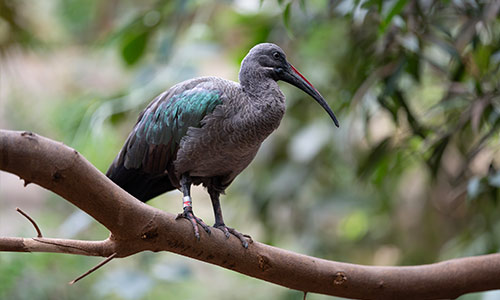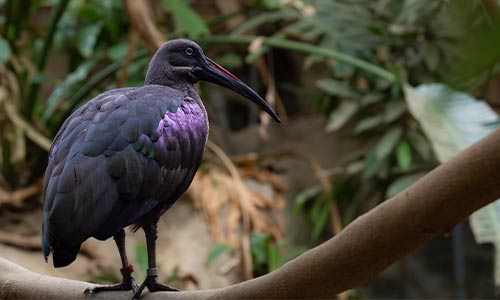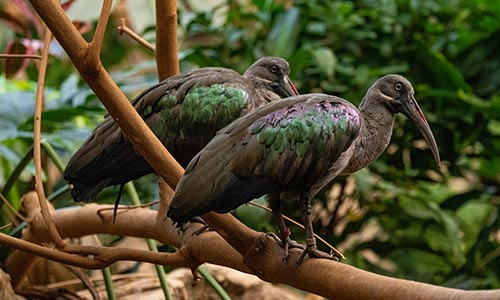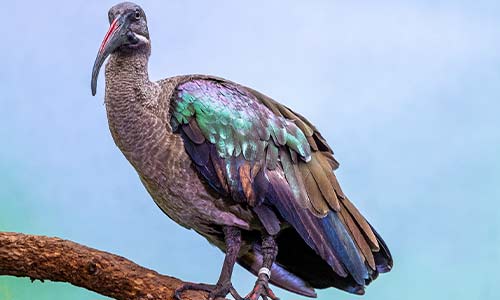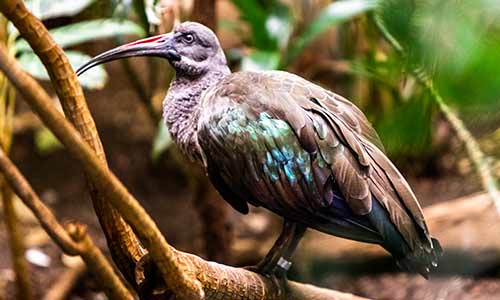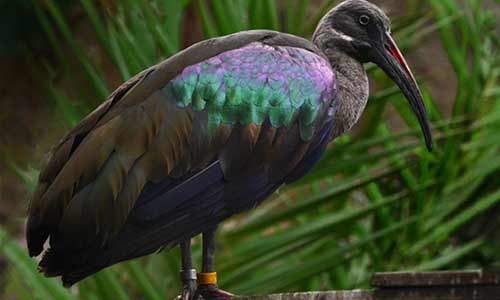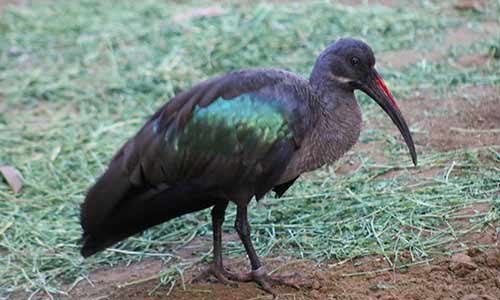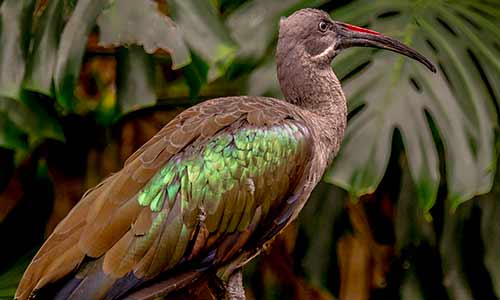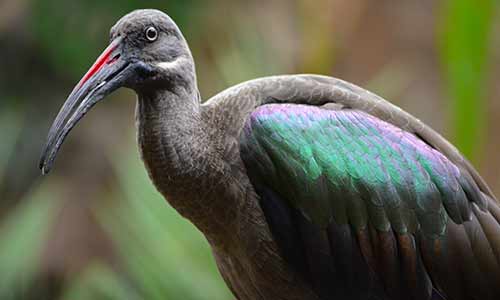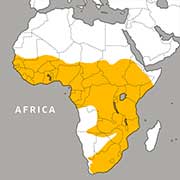Appearance:
The hadada ibis is a medium-sized bird with an olive brownish color. This species has iridescent green coloring on its wings and a long beak that curves into a spear-like structure. They have long legs, and their sensitive, curved bills enable them to probe mud looking for prey.
Size:
- Length: 25-30 inches
- Wingspan: 35-40 inches
- Weight: 27 pounds
Diet:
In the wild, the hadada ibis is carnivorous, eating a diet that consists primarily of insects as well as earthworms, snails, millipedes, centipedes, crustaceans, spiders and small reptiles.
Reproduction:
The hadada ibis has a lengthy breeding season that usually peaks around the rainy season. Males and females will display behaviors and pair off. Unlike other ibis species, they do not have large communal nesting areas. Mated pairs find a secluded bush, tree or telephone pole instead. The male gathers nesting material and the female builds the nest, in which the female lays two to three eggs, although they can sometimes lay as many as six. Both parents incubate the eggs for 25-28 days. Both parents feed the chicks by regurgitating their meals.
Behavior:
The hadada ibis is less social than other types of ibis. They may roost together, but they keep separate nests. When they fly together, they don't fly in an orderly formation as other ibis do.
Median Life Expectancy:
The life expectancy of the hadada ibis is currently unknown.
Habitat/Range:
Open grasslands, savannahs and rainforests of sub-Saharan Africa.

